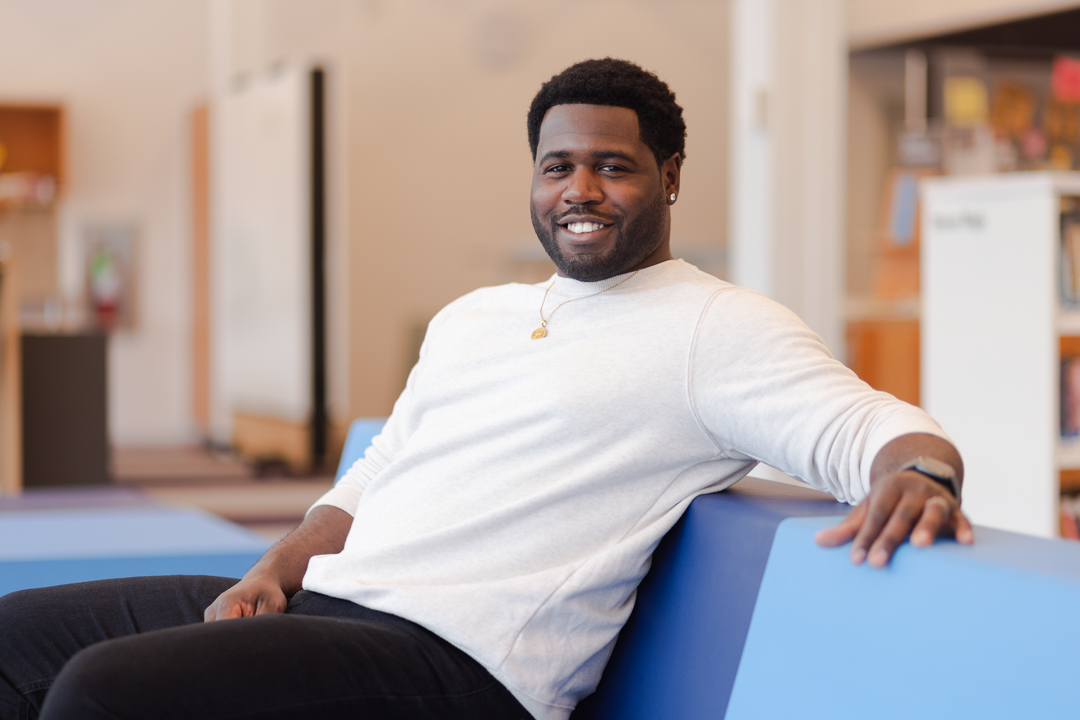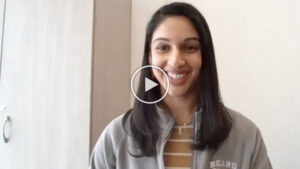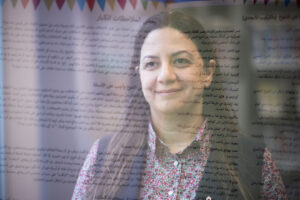When I was a teenager, I had summer jobs as a custodian. It paid pretty well. So when I got to college, even though I was working as an office assistant in the pharmacy department, I decided to look for more hours cleaning schools. I figured I could do that until I got my degree in communications. I went to my old high school website to see if they had any jobs, and there was a wrestling coach job posted. I had wrestled in high school, and my coach was still there.
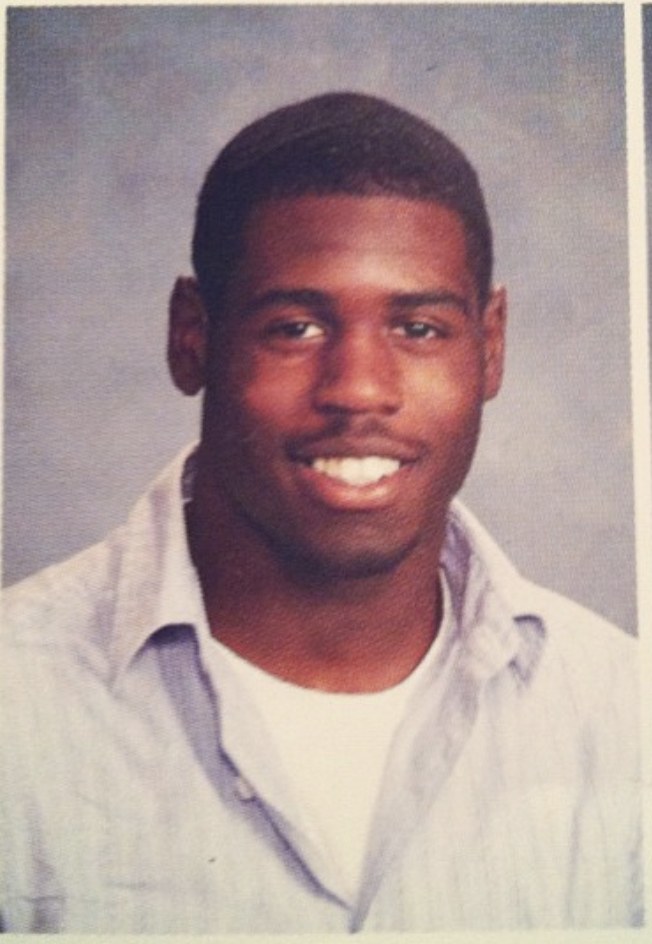
I started filling out the application, but there were so many qualifications: ‘must have wrestled in college’ plus questions about championships. I thought, ‘I was just good in high school. I’m done.’ So I didn’t complete the application.
Then my coach called and said, ‘Hey, I saw you half filled out the application. If you want the job, you got it.’
I asked if I would get paid, and I found out that I could work fewer hours than I was working at the school of pharmacy office and get paid the same amount. So I became a wrestling coach. And I fell in love with helping kids. And not just with wrestling — being a mentor, helping with their college essays, giving them an ear to listen or a shoulder to cry on, offering advice where they needed.
I have the ability to be there for people, and I wanted to be there. I wanted to do it forever. I wanted to give back to my community. I wanted to be a teacher.
So I went back to school and told my counselor, ‘I’m changing my major to teaching. I don’t care what it takes.’ They added a year and a half to my bachelor’s degree, but I decided, ‘I’m doing it.’ I wanted to be the teacher I wished I’d had.

My first year teaching, my school had something called Seminar that was a 90-minute block every other day where students could go to any teacher to get help. I was a part-time teacher, so I had a lot of time to talk to kids. I was the only Black male teacher in the entire school, out of about 200 staff. There was a Black student who came to me and told me, ‘I’ve never had a Black teacher.’
One of the things he talked with me about was an incident he’d been through at the school, where a kid was messing with him in the cafeteria. He told him to stop, and the other kid (who was white) called him the N word. He was very upset and offended by it, and he punched the guy in the face. He was taken to the dean and suspended, but nothing happened to the student who called him the N word.
He told me, ‘I hate this school. I don’t want to be here. But I’m glad you’re here at least.’
My reaction was, ‘I hope it doesn’t happen again. That sounds like one huge, isolated incident of racism.’ But then I started to see more racism within the school — maybe not overt actions of racism, but systemic things. Small things. People have biases, you know what I mean?
For example, if a group of white girls goes into the bathroom, security goes, ‘Oh, it’s a harmless congregation.’ But if a group of Black girls goes into the bathroom, guilt is assumed, whether they’re doing something wrong or not.
I would see security do it. I would see them go up to Black kids and kick them out of certain areas. And then do nothing when the white kids would come sit there.
I would see kids — mostly white students — get into trouble, and they were seen as deserving of a second chance: ‘Hey, next time, don’t do that.’ But with Black kids, they were suspended, with zero tolerance, even if a different student had done the same thing two weeks ago with no suspension.
So when I started to see that, I realized that student was right. And that’s what keeps me in teaching: fighting racism within schools.
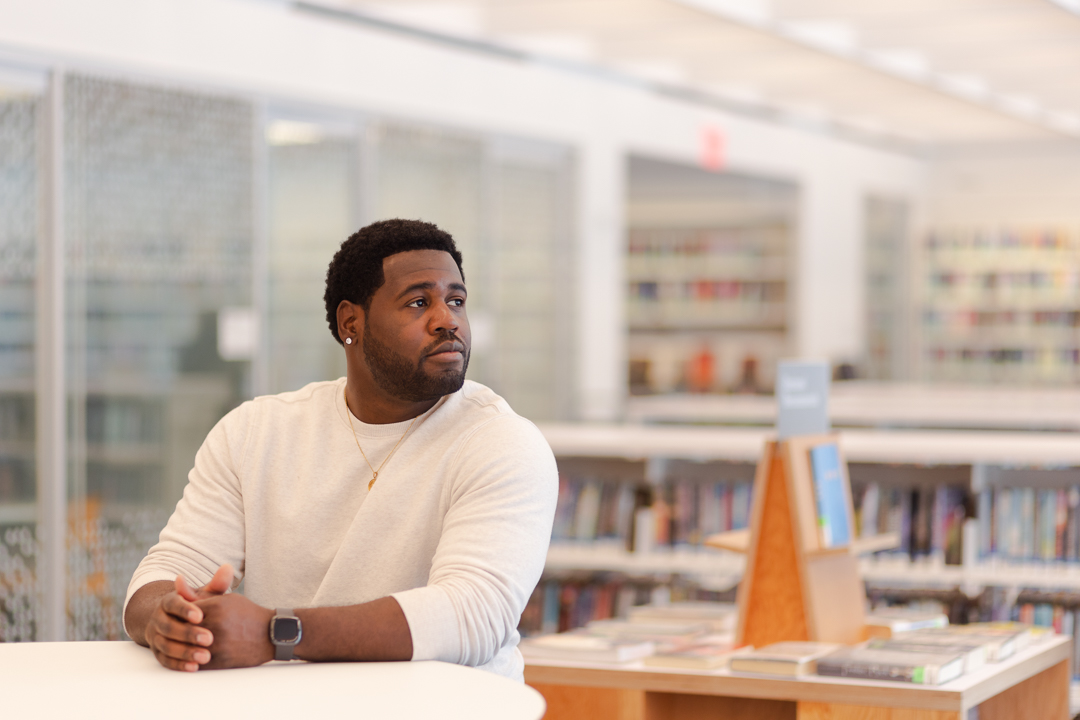
I didn’t feel like I experienced racism much growing up. But on the first day of sixth grade, my math teacher did something that stuck with me. And I love this dude now — I don’t even think I’ve told him this story. He’s definitely not a teacher who would do this often. But the first day I walked into pre-algebra, seventh period, he was like, ‘Wait a minute, this is the advanced math class.’
I told him, ‘I know. I’m in this class.’
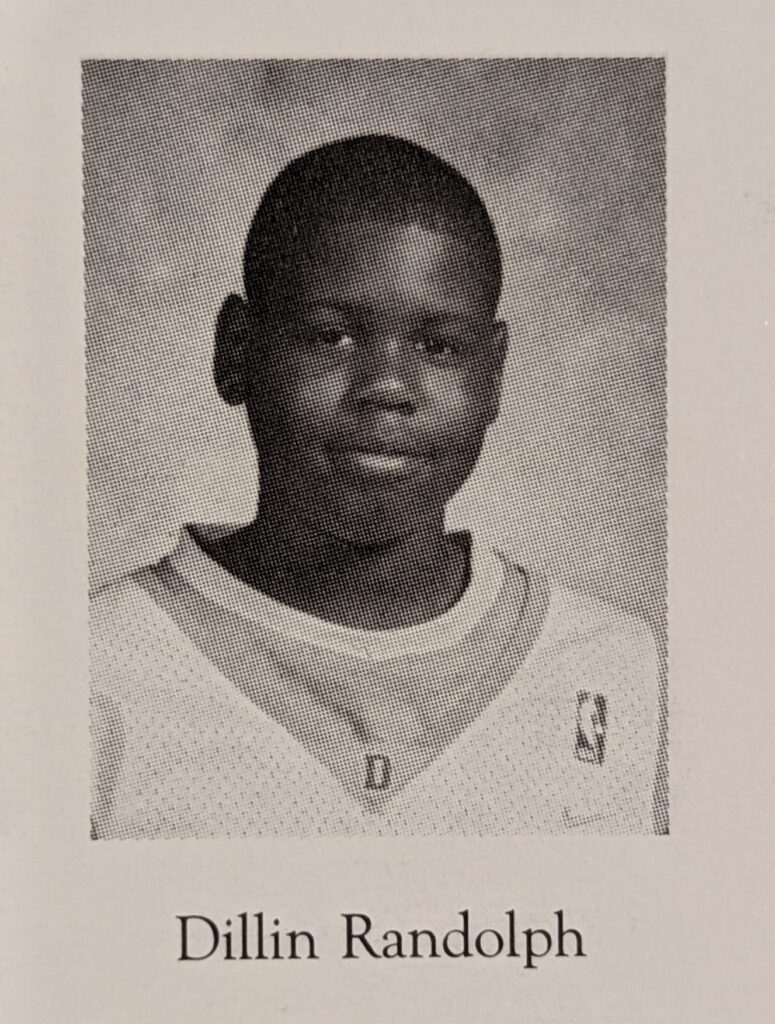
He said, ‘Let me see your schedule.’ So I had to show him my schedule to prove it. And when I walked in, I saw why he thought I wasn’t supposed to be there. Because I was the only Black kid in the class.
That was the first time I started to see differences, because in elementary school, you don’t really separate out the classes as much. But in sixth grade, that’s what it was like being in an honors class: I immediately felt like I did not belong.
I did not do well that year. Because I felt like I wasn’t supposed to be there. If I got a C, I thought, ‘That’s what I deserve.’ It took me a long time to realize that someone assuming I didn’t belong didn’t mean that I didn’t.
In high school, I had a teacher who believed in me and said, ‘You should try an AP class next year.’ And I didn’t do well at first, but having that one teacher tell me they thought I could do it made me realize, ‘I belong here.’
A lot of times I was the only non-white kid in honors and AP classes. I started to internalize some racism myself: ‘Why aren’t the rest of the Black kids trying hard enough? Are they not smart enough? Maybe I’m just exceptional.’ Except no, I wasn’t exceptional, I was privileged enough to have parents who focused on school. I was privileged to be able to focus on my studies. But for a lot of my Black peers, studies were the least of their worries: ‘Why are you trying in class? We’re trying to survive.’
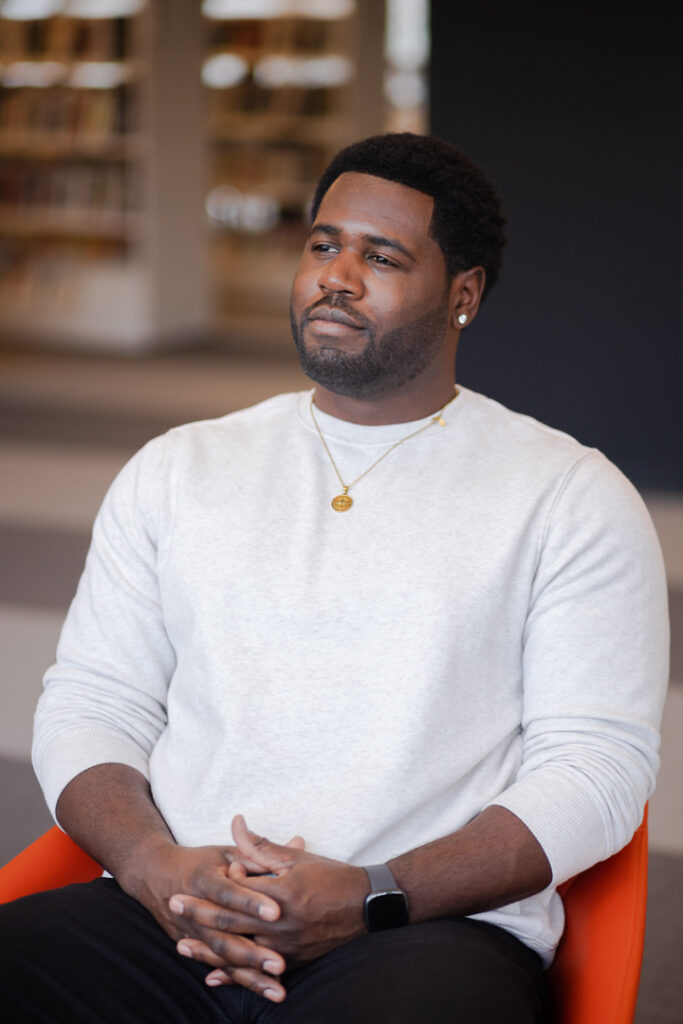
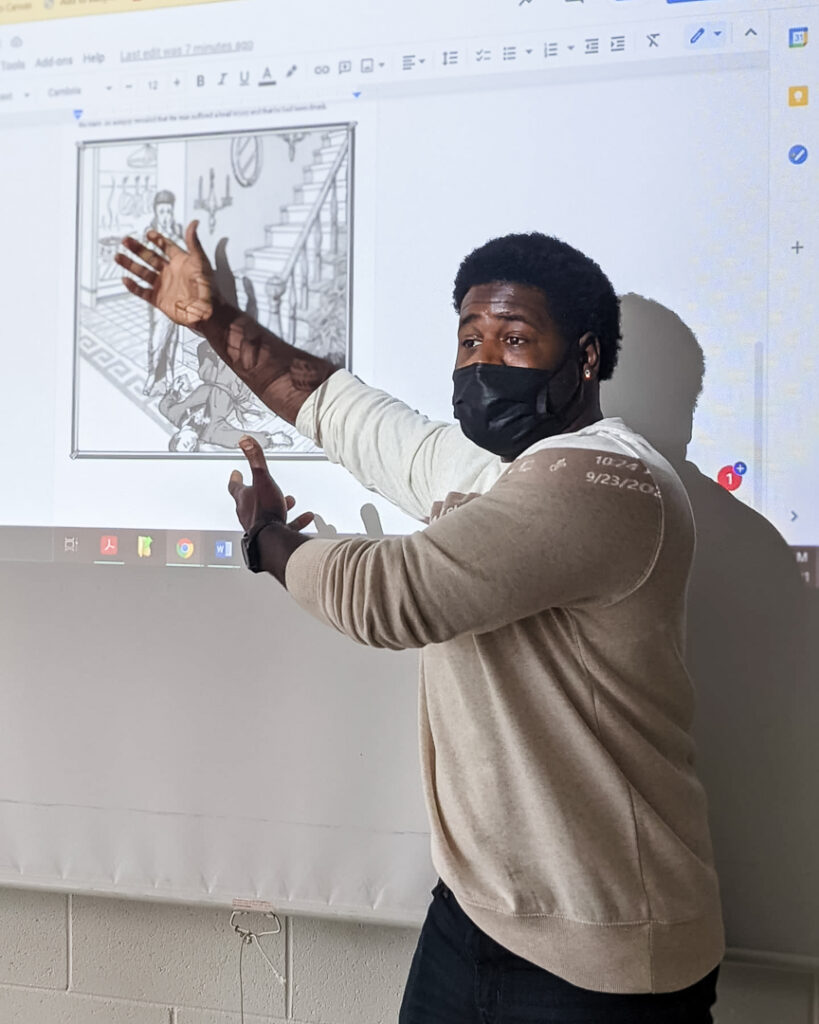
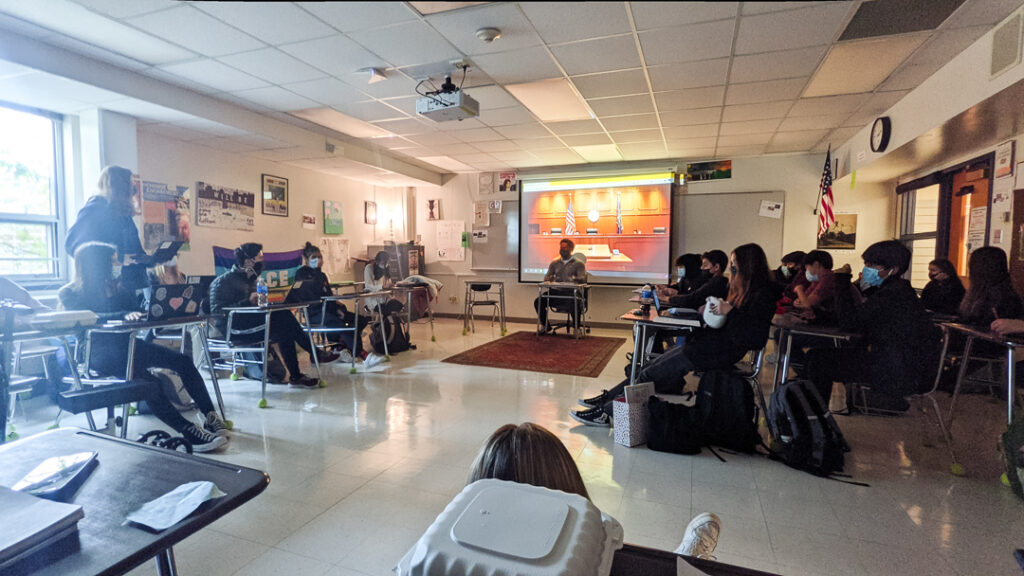
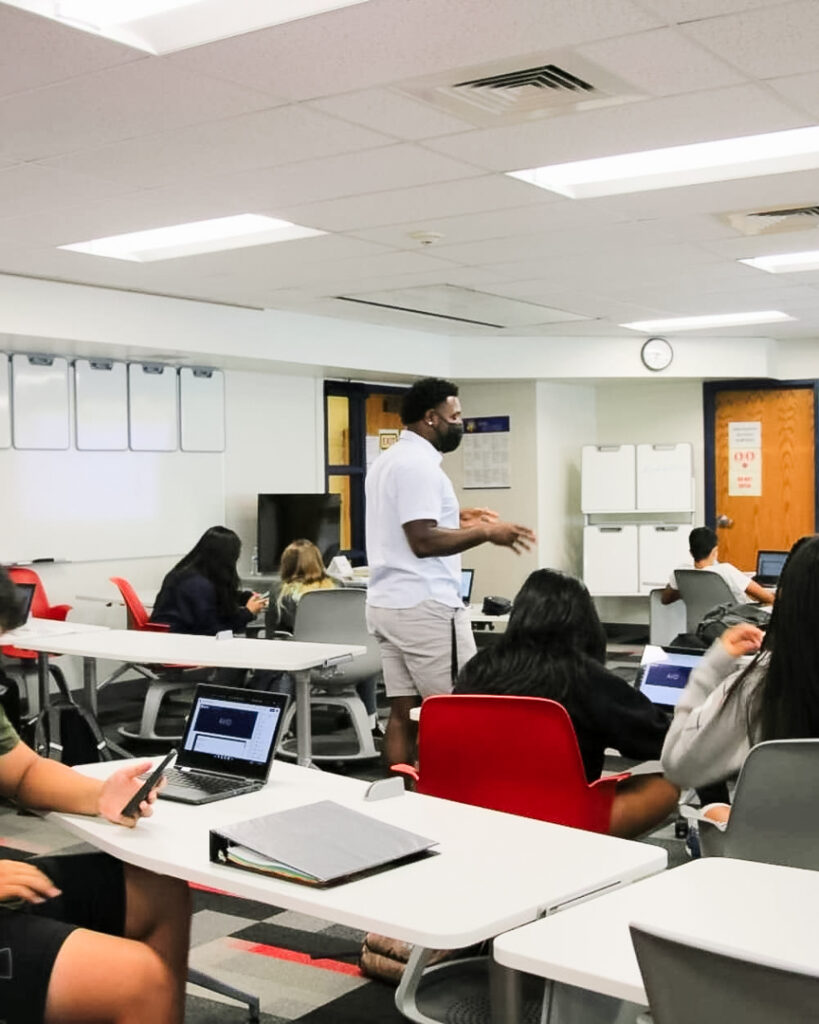
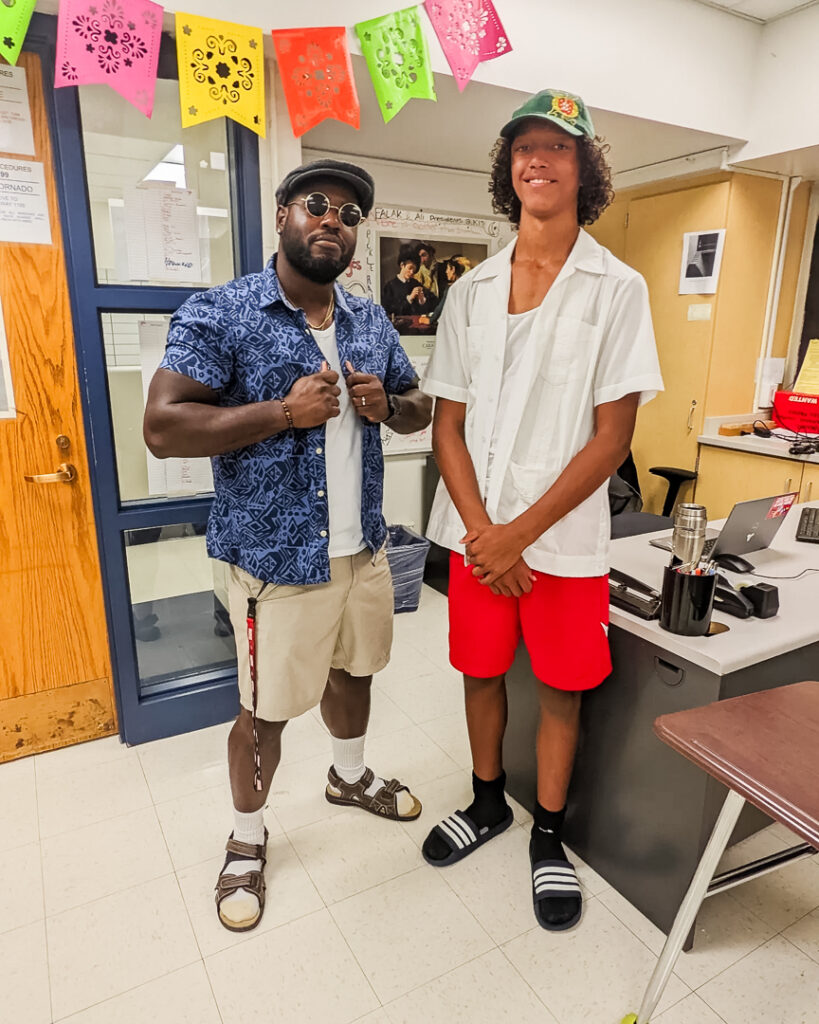
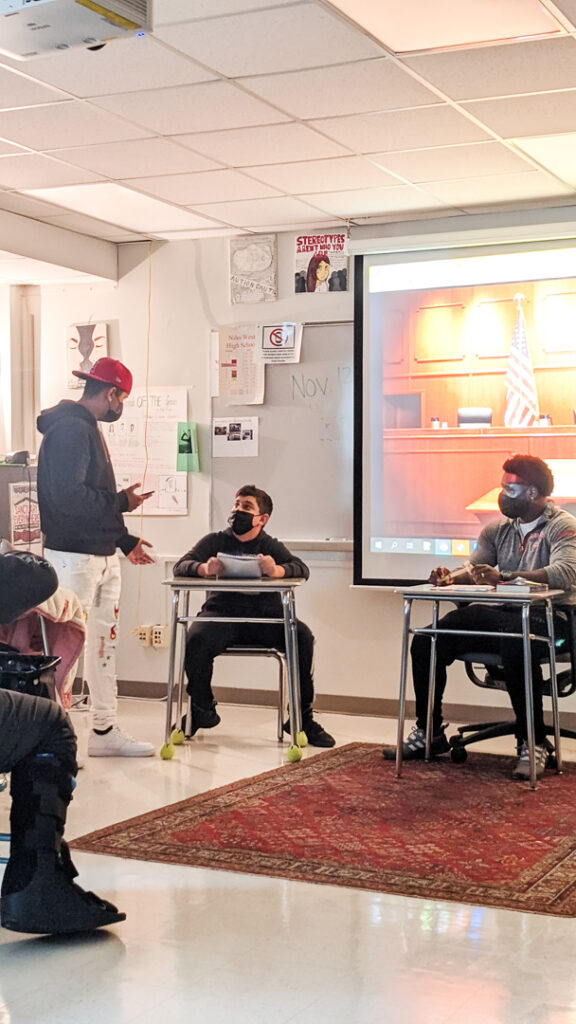
What I’m trying to do now is advocate for systemic changes that will help Black students feel like they belong. As a teacher, I’m working with the administrators on how we see discipline and how we work on restorative practices in the classroom. I want to make sure we’re not punishing Black students disproportionately and that kids aren’t sent to the dean because of a teacher’s implicit bias. What are we doing within the classroom to prevent something from even happening?
As an English teacher, I teach a book called All American Boys by Jason Reynolds and Brendan Kiely. It’s about a kid named Quinn who realizes white privilege is real, because he sees how his Black peers are treated differently. Through that book, students are able to learn and talk about privilege within the classroom setting.
When I taught American literature, I brought in a Hip Hop as Poetry unit. We looked at Kanye lyrics, Lil Nas lyrics, and all the poetic and narrative elements they put into their songs. If the students thought a song was good, we’d analyze it to find out why. We’d analyze why they wrote these lyrics.
It’s not about, ‘I’m a young hip teacher, I like rap music, I’m gonna have my students look at it.’ You can have a 60-year-old teacher who’s been teaching forever have students analyze hip hop, because it has so many literary merits; there’s iambic pentameter and enjambment and all kinds of other elements. And hip hop is rooted in poetry and music from the 1920s to the Harlem Renaissance — or even old slave spirituals from the 18th and 19th century.
I try to allow things within the curriculum to make students more aware — and to normalize talking about racism, to where it’s not a scary topic. We can talk about race, and everyone’s fine. The effects of race are real, even though we made it up. We need to talk about it.

As a teacher in my classroom, I can do a lot with my students. But as a teacher in the building, I want to work with the administration to do things that affect more than just the kids in my class. One thing I work on is the restorative practices team, where our main goal is to spread more awareness about restorative practices and ensure everybody is trained on doing it in their own classroom.
What it really breaks down to is building relationships with students. And I know it sounds stupid, because every teacher already knows relationships are important. Of course. But some of those relationships do need to be more intentional than others.
For example, when I came to Niles West High School, I knew nothing about Muslim culture. Nothing. I had to Google it. I had to ask students about it. Students were off for something called Eid, and I was like, ‘What is Eid?’ Instead of going to the students and asking, ‘Why are you guys not coming to school?’, I watched a YouTube video about it. I watched videos to make sure I could pronounce students’ names correctly. You have to bring your full self and be vulnerable with them. You can’t build relationships based only on what you already know and expect that to help you reach students who are different from you.
Students will tell me, ‘My mom did this — she said that.’ And I’ll say, ‘My mom didn’t do that. But I can understand.’ Even if you can’t completely relate, talk to students. Care about them. We don’t have to be friends with our students, but the conversations have to be friendly.
When you have that relational capacity with students, you don’t have to send them to the dean. When a student does something that they shouldn’t be doing, I can talk to that kid. Instead of saying, ‘I’m done with this, go to the dean,’ I can have a conversation. If there’s trust and a relationship between us, I can say, ‘Hey, you’re not doing what you’re supposed to be doing right now. But since you know me and I know you, let’s try to get back on track.’ And so far, I haven’t had many problems with that strategy.
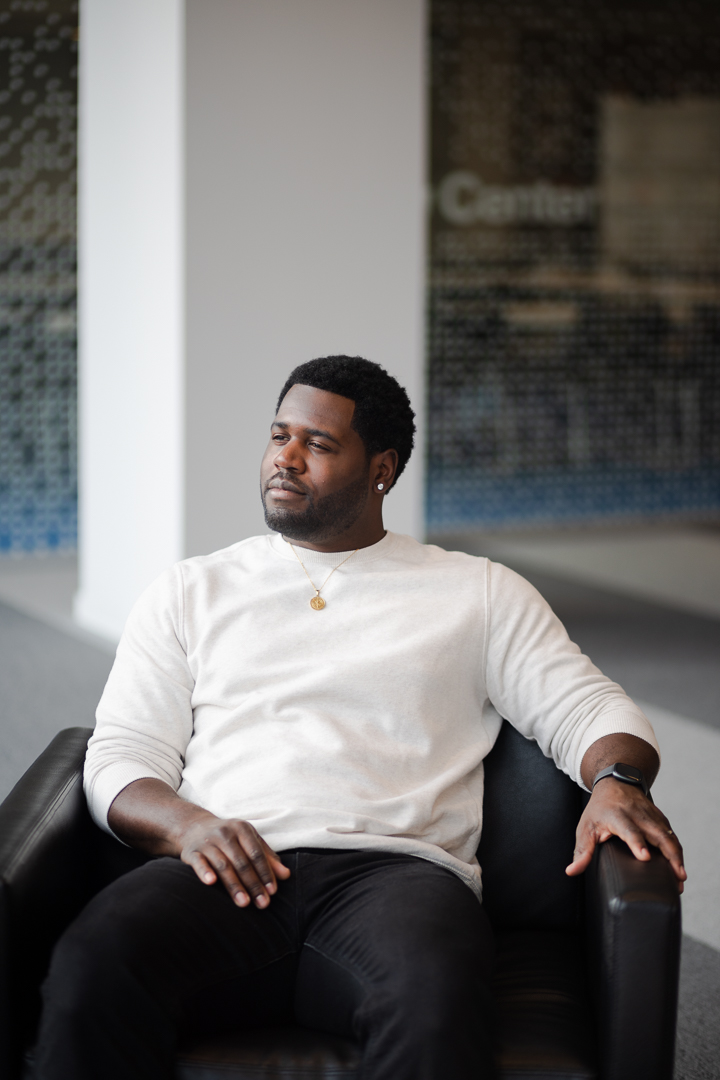
Restorative practices is a social science focused on building relationships with students. Discipline becomes about solving problems, and it’s more preventative than reactionary.
For example: A student is late to class every day. That’s disruptive. As a teacher, it can get to our ego, because it’s our class. And there are many reasons why a teacher would be upset if a student is chronically late. Some teachers might go, ‘You know what, that’s it. You’re late every day. That’s detention.’ From a restorative practices perspective, that isn’t the most effective way to get them to change their behavior. A more effective way to do it would be to talk to the student, instead of assuming that they don’t want to learn and they don’t care. Instead, ask them: ‘Hey, I’ve noticed you’ve been late for a few days in a row. Is everything okay?’
That’s the best question you can ask: ‘Is everything okay?’
They might go, ‘I’m sorry, I’ve been waking up late and haven’t been getting to school on time.’ Then you can ask them, ‘What do you need to do in order to do that?’ And they might tell you. Then you’ve got a relationship, and then they’ll try to help you out.
Or they might say, ‘No, everything’s not okay.’ And then they’ll tell you. And you’ve still got a relationship, and you can go from there.
That’s the heart of restorative practices: ‘Is everything okay? What happened? What can we do?’
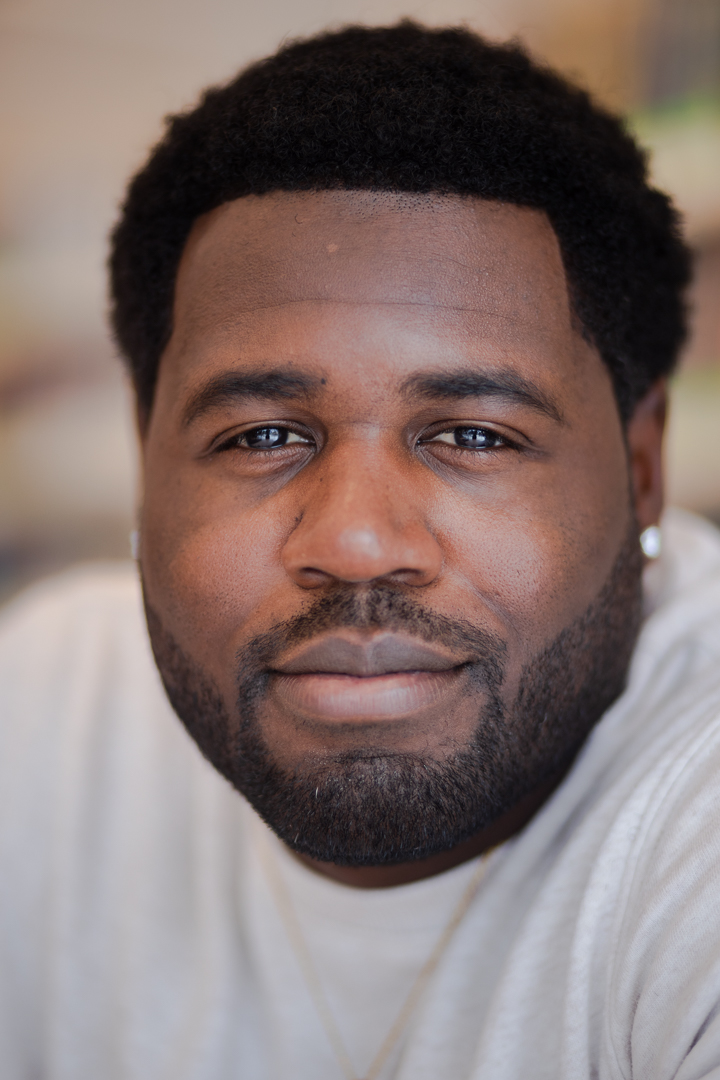
If something racist is said in a classroom setting, you immediately have to address the hate speech that happened. Whether it was said with intent to harm or not, that’s something that every teacher should address in the moment, right then and there.
You don’t have to yell at them, either. You say, ‘We don’t say that. It’s not only offensive, but hurtful.’ And then from there, in my opinion, that’s such a big thing that I’d have to stop class. I’d give the rest of the kids an assignment, and I’d talk with those two students:
‘What happened? Is everything okay?’
You can hear both sides. And then you can understand the context of what’s going on. So in the case of the student I mentioned earlier, from my first year of teaching, you’d send the kid who was punched to the nurse and you’d also understand that the kid who hit him reacted to being hurt. And then you’d want to try to help the relationship between those two get better.
If it takes a while, it takes a while. It’s not gonna be fixed in one conversation all the time. But you’re working towards repairing and restoring.
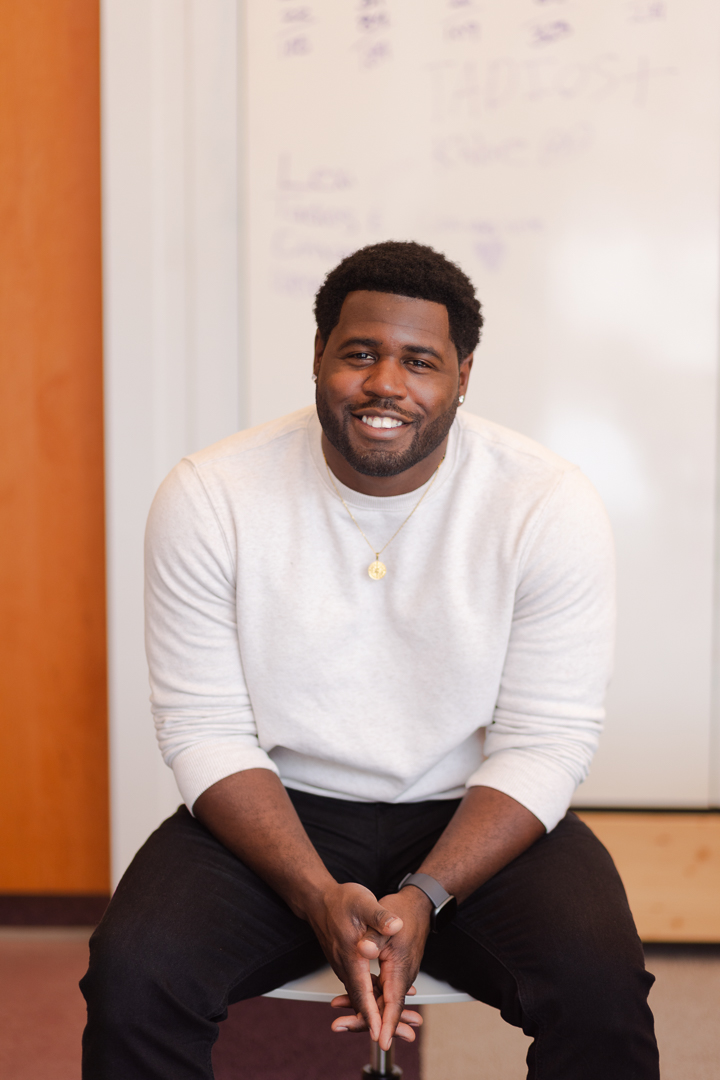
I’ve never questioned staying in education, but I’ve questioned staying in teaching. The reason why is because in the classroom, I can only affect so many students — you have a lot stronger impact on those students, but there’s maybe 100 instead of thousands who you’re impacting in a year. I’ve thought about whether I need to possibly leave the classroom to have a larger impact, especially on Black students at a systemic level. Is what I’m doing right now enough? I don’t know. I don’t know yet.
Right now, I’m getting my doctorate degree in administration, where I will be certified to be a principal. I keep thinking that if I were a principal, I could have an impact on everything in the school. I’d still see kids, but not like I used to. And my ‘why’ would be impacted.
It’s all about feeling valued, too. I’m at probably one of the highest paying districts in the state, and more pay would be amazing, but I feel like more money would not solve the problem of feeling valued. For that, you need more trust between administrators and teachers. You need to value teachers’ expertise and treat them like they know what they’re doing. Not treat them like they fell into this job because they couldn’t crack it somewhere else.
Teaching is a first choice profession. You want to be treated like that.
I know being a school leader is hard. But within your reach is the best thing you can do: listen to your constituents. And the way to listen is to ask: ‘What do you need from me?’
It’s about trying to have some sort of feedback loop, so you can hear what people are saying, and then change your actions based on that. I know a lot of administrators have surveys that come out where they talk about the impact of their own performance. And I feel like what they should do is look at that and go, ‘Oh, you think I did great at that part? I’m going to keep doing that. But not so much at that part? Let me get better at that, or commit to not doing that anymore.’
You should always prioritize and listen to the people you serve.
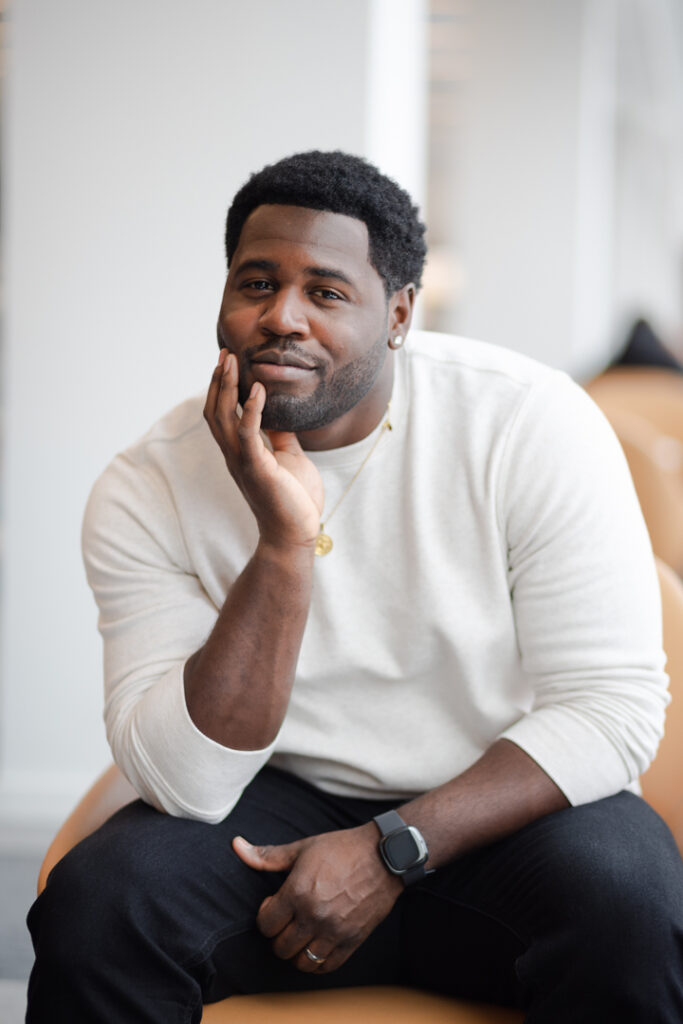
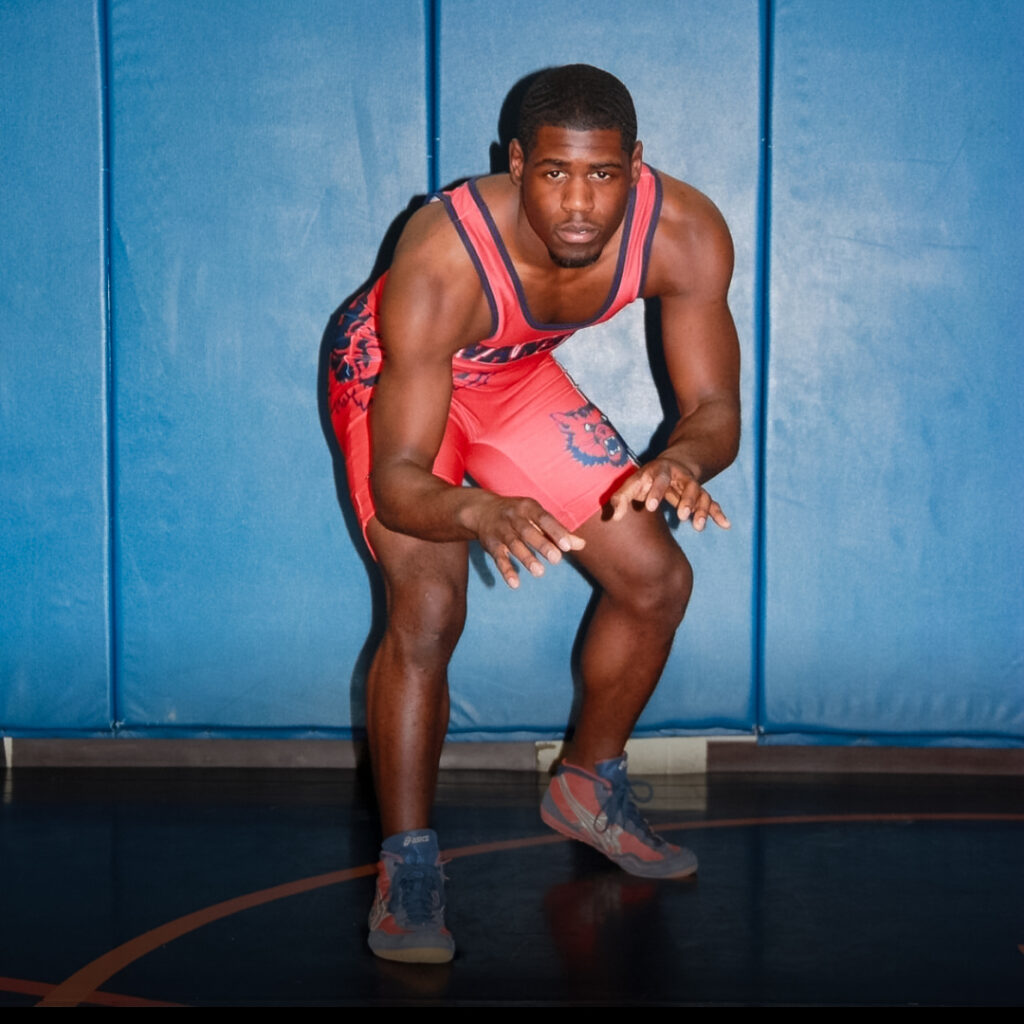

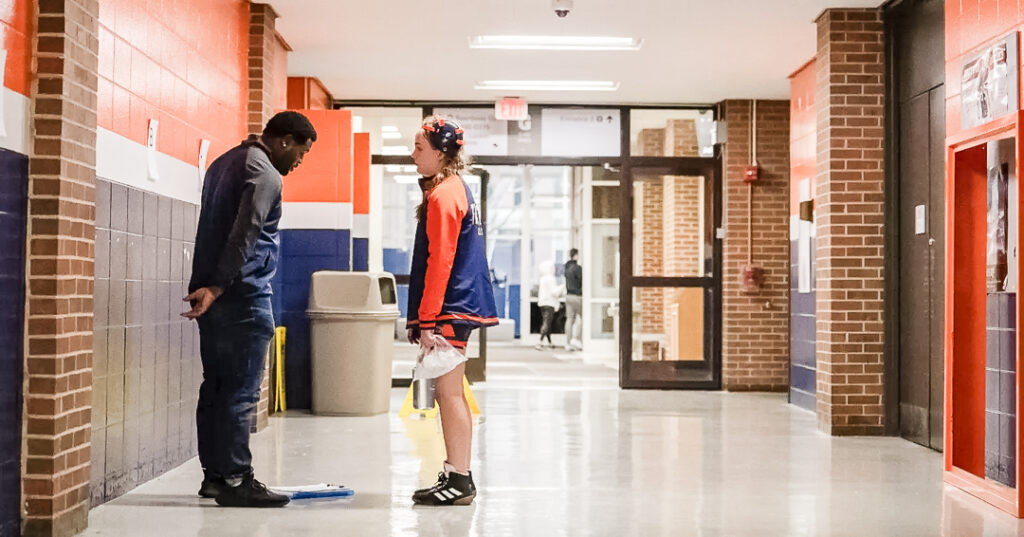
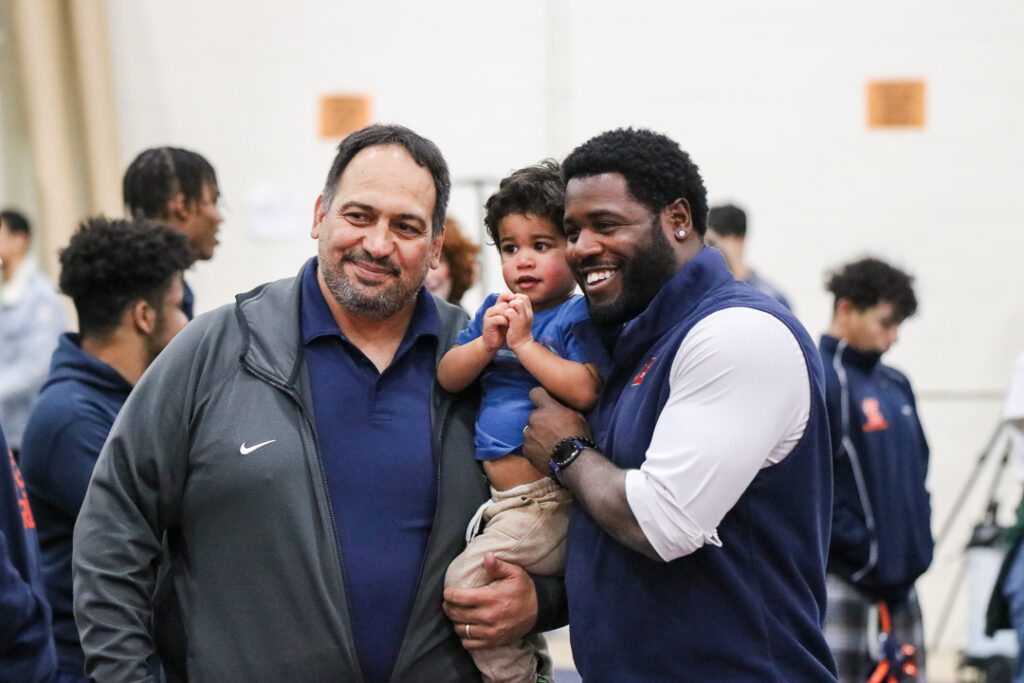
When I taught at Rolling Meadows, earlier in my career, I was the head wrestling coach for the entire program — boys and girls. And when I was in high school, we always had three or four girls on the team, too. So I just thought girls wrestling was normal. Until I went to other places. It turns out it’s abnormal to have girls on the wrestling team. So I wanted to try to normalize it.
I created a girls wrestling team before it was official in Illinois. I set up schedules, called coaches, and set up their own meets and tournaments to try to legitimize girls wrestling as a sport.
As a coach, I see the girls being treated differently from how I was treated while wrestling in high school. I’m seeing casual and overt sexism where I didn’t notice it before, as a man, because it didn’t happen to me. When I see it or hear stories, I’m like, ‘Damn, you all really do go through this.’
It takes a toll on me every day: a girl on my team coming to me with ‘this is what this guy said’ or ‘this is what his coach said.’ I can see why it’s hard to be a woman and deal with that all the time, and I feel like I take on a lot of those emotions. And it makes me want to fight even harder to make sure girls wrestling is something that is seen as a legitimate sport.
I feel like maybe that’s the common thread between where I teach at Niles West and where I coach in Evanston: moving towards where I’m seeing injustice. I want to do what I can to make sure I eliminate those systems of injustice.
That’s what it all boils down to: I want to help.
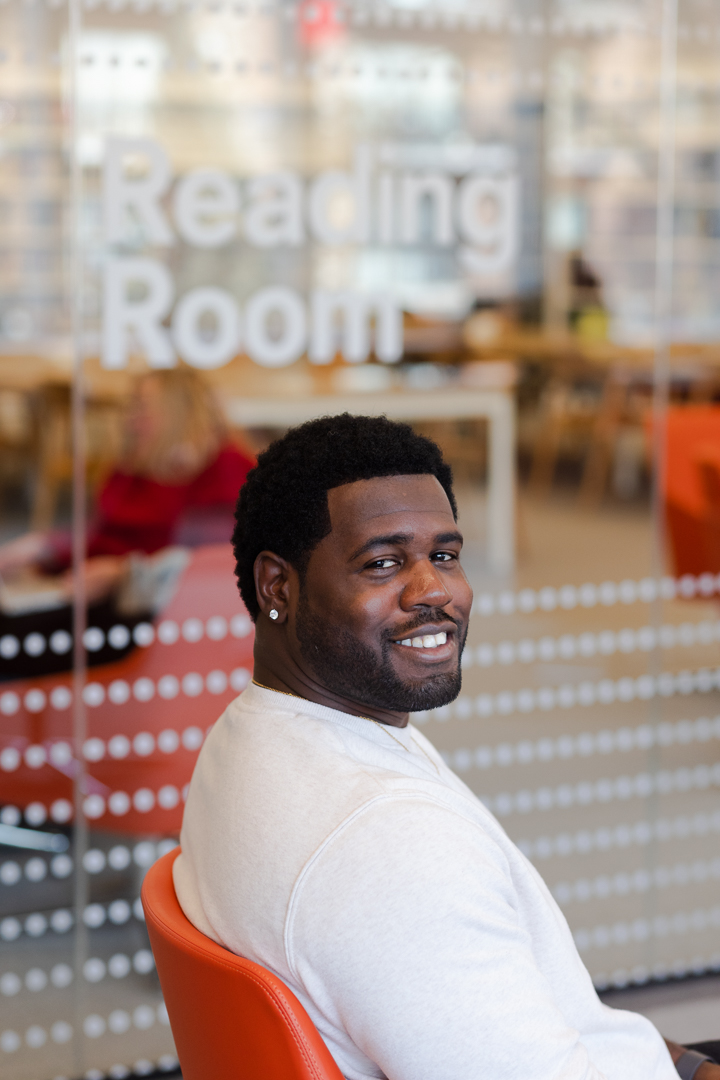
I’m not afraid of artificial intelligence right now. I feel like we should be focusing on teaching the process of writing — breaking it down and chunking it up. It’s not just, ‘Hey, write this out.’ It needs to be, ‘This is how you analyze someone’s rhetoric. This is how you edit what you write.’
Students should always have multiple drafts, especially with big writing assignments. Students should be editing their writing themselves, in class, and focusing on the process of formulating their own thoughts.
A lot of what I look for is style and voice within students’ writing. If we can help students find their writing voice, and find a style of writing they like, then we’re putting more ‘human’ into the humanities.
I compare it to a math class, where a student needs to show their work to demonstrate mathematical thinking. AI is the calculator. With essays, the most important question should be, ‘How did you get there? Show me your work.’
I would hope if you have 25 kids in your classroom, you would read 25 different essays, because you want everyone to write differently. I grade students on their voice. They practice writing every day in their own style and their own voice, and I try to help students grow with what they already have.
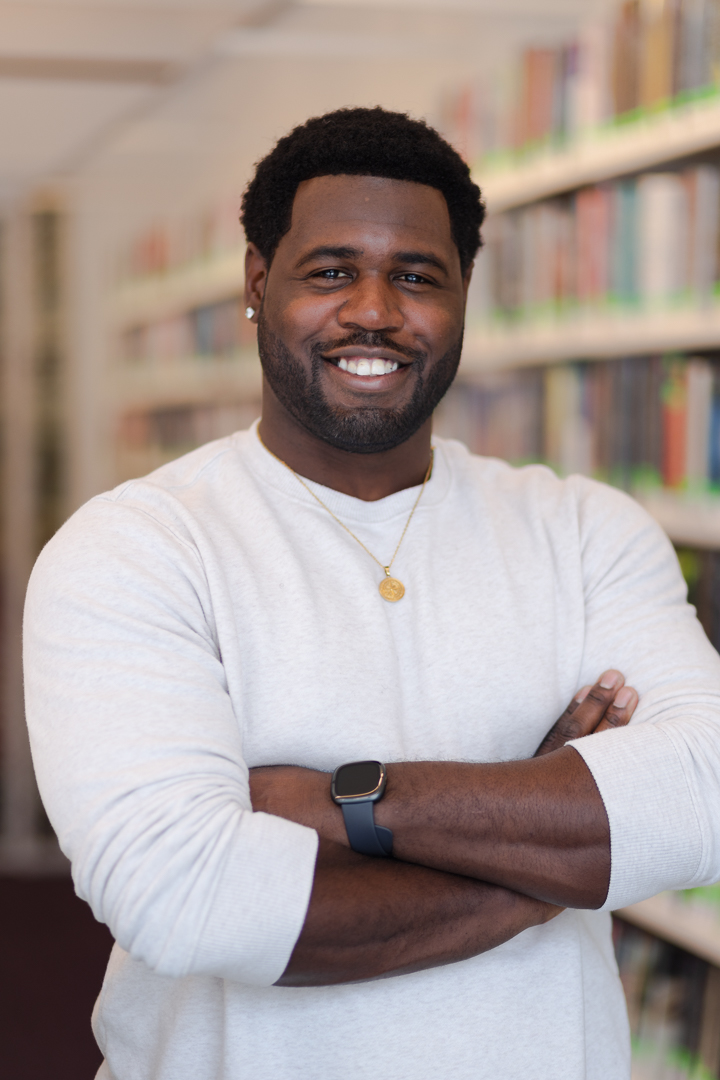
On my first day of teaching, this huge kid — like 6’4”, 220 pounds — walked into my sophomore class. He was the star football player, and he turned out to be on my wrestling team too.
Later in the year, I assigned an independent reading project, where the kids read any book they wanted — from Diary of a Wimpy Kid to Infinite Jest. And this student didn’t do it. He was like, ‘I’m sorry, I didn’t get the project.’ I gave him two weeks to finish a book. And then a couple weeks later, he turned in the project, but late.
As part of the project, I’d asked students to draw an image from the book and write a one-page explanation of how this image was relevant to the book. Very simple, in my opinion. He drew a picture of the three little pigs. He wrote up the story of the three little pigs. As a sophomore in high school.
He’d thrown something together just to get a grade. So, he did not get a good grade on that. Which left his final grade for the semester at a 79. Some people might say, ‘He got a C, he was lucky.’ But I had a conversation with this student. I told him:
‘You didn’t try hard on this. I’ve seen you try hard, because I coach you. I’ve seen you try hard in football and wrestling, every day. Now stretch this muscle, use your brain, let’s figure this thing out. Have some time management strategies so you can get your work done, and do sports, and hang out with your friends. Let’s write down your homework, when it’s due, and when you’re going to do it.’
So I helped him figure out those executive functioning strategies. I told him, ‘You’re gonna get a C this semester. But next semester, you’re gonna get an A.’
He said, ‘I don’t know, Mr. Randolph. I’ve never gotten an A in English.’
He got a 96. Because he just tried harder.
And I checked up on him — I looked at his grades every single class after that. Straight A’s. He plays football in college now.
Believing in students, showing you believe in them, really does transform them.
–Dillin Randolph
English Teacher at Niles West High School
Skokie, Illinois
